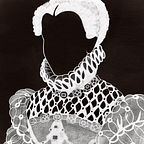How Syphilis Became Known as ‘French Disease’
It’s hard to trace the origin of diseases even for us — imagine having to do it during the Renaissance.
 The miraculous discovery of penicillin in 1928 helped cure many of mankind’s ailments, with syphilis numbering among them. Considering one of its previous cures was an effective poisoning of the victim with mercury in the hopes that the disease would die faster — which was survivable, though not without severe damage — it might serve as a hopeful reminder that even with a disease with its ‘cure’ being almost more devastating that giving up, the future could hold a true and safe cure.
The miraculous discovery of penicillin in 1928 helped cure many of mankind’s ailments, with syphilis numbering among them. Considering one of its previous cures was an effective poisoning of the victim with mercury in the hopes that the disease would die faster — which was survivable, though not without severe damage — it might serve as a hopeful reminder that even with a disease with its ‘cure’ being almost more devastating that giving up, the future could hold a true and safe cure.
No longer do people infected with the std have to suffer as Philip I, landgrave of Hesse, had to suffer after catching it as a consequence of his breaking of his marital vows. Perhaps it was this very fact that had caused him to see it as a punishment from God, and prompted him to ask Martin Luther if it shouldn’t be possible for him to take a second wife. To his credit, at least Henry VIII of England had made that sort of an attempt first.
The Presumed Origin of the Disease
In 1492, Christopher Columbus, the Genoese navigator and explorer, famously landed in the Americas under the patronage of Ferdinand and Isabella…
